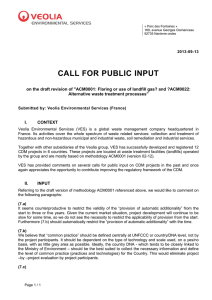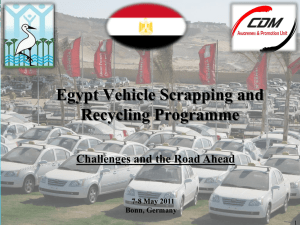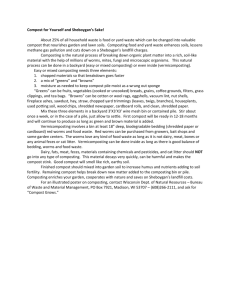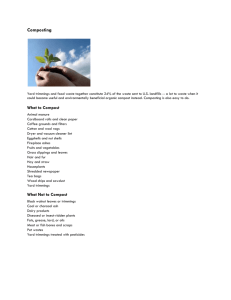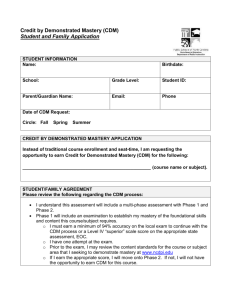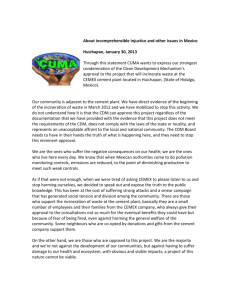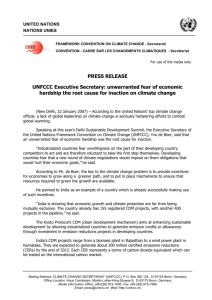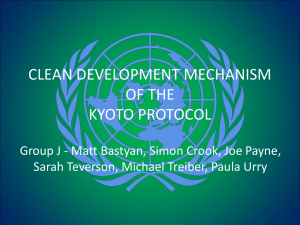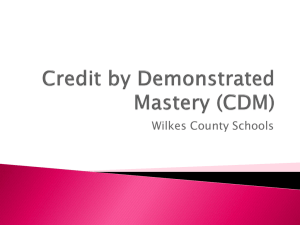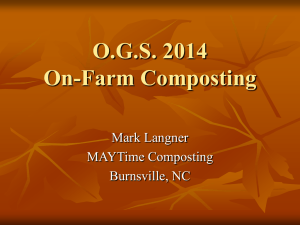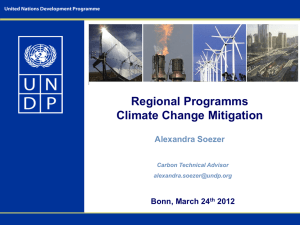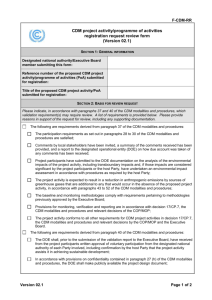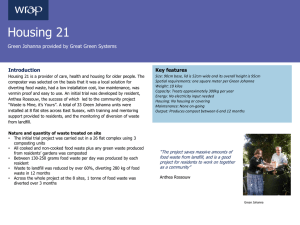The Uganda Municipal Solid Waste Compost Program - CDM
advertisement
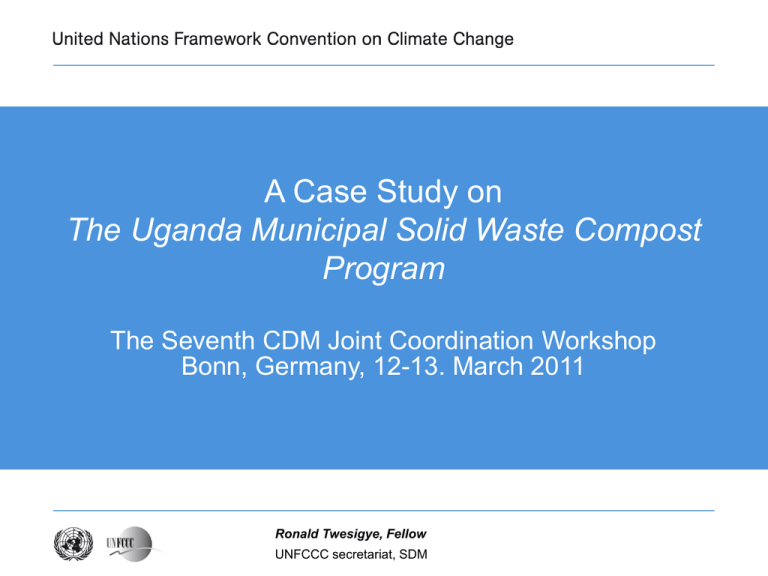
A Case Study on The Uganda Municipal Solid Waste Compost Program The Seventh CDM Joint Coordination Workshop Bonn, Germany, 12-13. March 2011 Ronald Twesigye, Fellow UNFCCC secretariat, SDM Outline • An overview of the Uganda MSW Compost Project • Project Implementation a) issues/challenges, and b) lessons learnt • Conclusion The Overview of the Uganda MSW Compost Project The PoA Goal Avoid methane emissions from Municipal waste landfills by undertaking composting of the wastes and using the organic matter in wastes as humus for soil conditioning and plant growth This is achieved by: Identifying towns/municipal entities in Uganda to set up composting plants and managing the program in line with UNFCCC CDM procedures Overview Continued The Business Model Adopted The Overview contd Program Registration Status Program is registered with the EB (12th Apr 2010, Reg No.2956 ) The program will create 83,700 metric t CO2 e per annum for the first crediting period of 7yrs. Addition of CPAs yet to be realized Implementation, Issues/ Challenges and Lessons Learnt Project timeline 2009 2010 2011 2008 2007 2006 2005 Program initiation & building infrastructure Program Implementation • The two key phases explained: a) Program Initiation (meetings with officials and key stakeholders) and actual building of the compost plants, acquiring machinery and training b) Implementation involves actual composting, monitoring and further training in CDM processes and regulation Issues/Challenges • Validation and Registration a) b) c) Long waiting times Costs (USD 80 – 100K) Amount of information requested • Project Monitoring a) Monitoring equipment (availability, skills required for daily use and Calibration) b) Costs for maintaining the monitoring required c) Maintaining a highly motivated list of PEs • Training & Awareness raising a) Lack of local expertise with CDM Knowledge b) Information gap in the project entities Lessons Learnt Some key lessons: a) PoA promotion is continuous. b) Training and Awareness raising should be part and parcel of the program management c) CER revenues greatly impacts implementation of the activities. d) CDM procedures are lengthy and very uncertain Conclusion a) No prior experience for PoA activities • A steep learning curve for all involved. b) Long timelines affect the motivation of those involved • Favorable procedures required c) CER Revenues are required to make the CPA sustainable • Favorable procedures required d) Training and awareness raising is a critical program component • DNAs can play a more active role in Training & information dissemination
